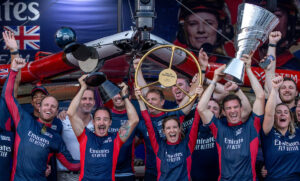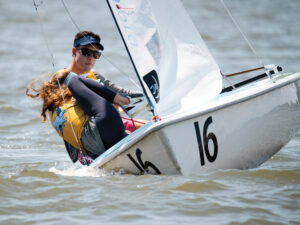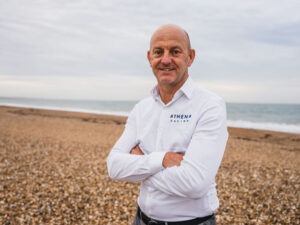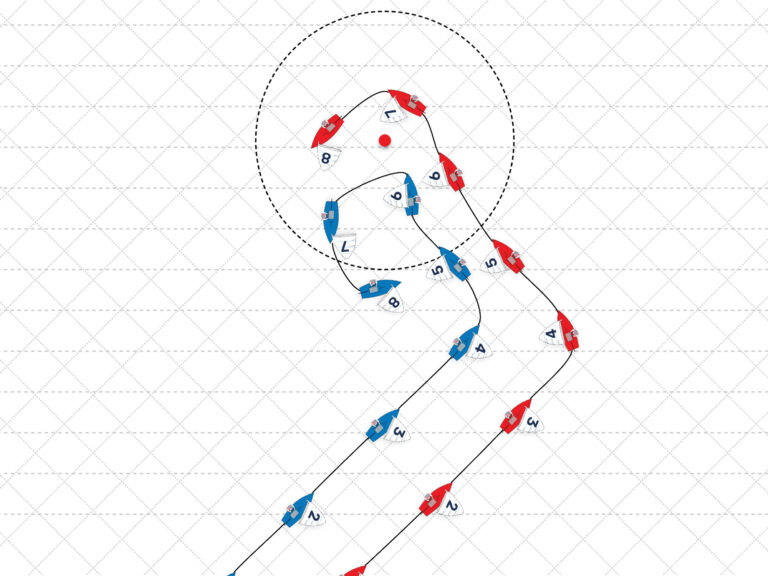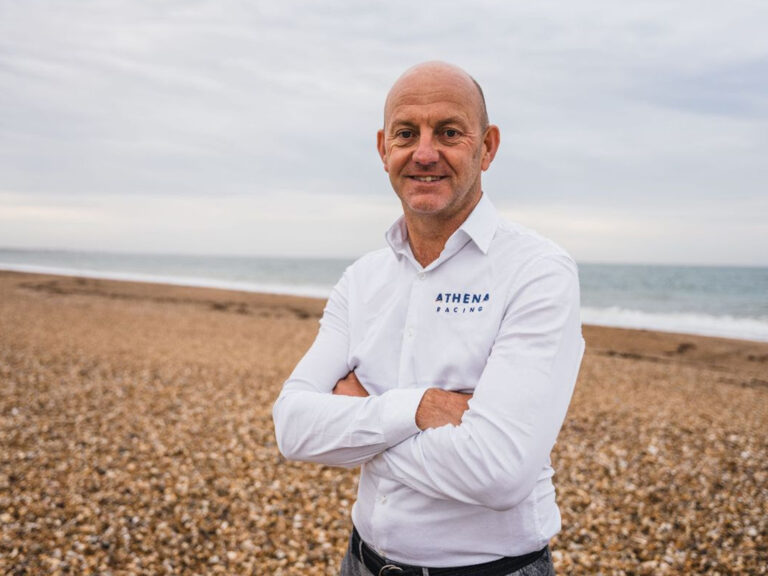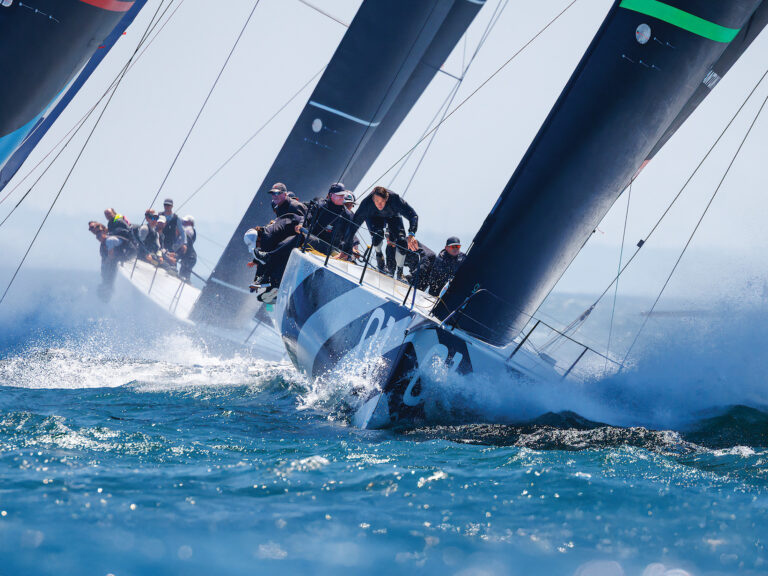
Peyron960
To win the Barcelona World Race, Loïck Peyron spent three months braving the world’s toughest oceans with co-skipper Jean-Pierre Dick. But when I caught him on the phone shortly after his return, Peyron sounded as if he’d just come off a port-to-port day trip on a Sunday afternoon. He described matter-of-factly the mishaps they faced that resulted in two stopovers along the way, some nasty sea conditions, and a scary passage through the Strait of Gibraltar.
Peyron did not seem blasé, by any means; his enthusiasm for what he does is apparent, even over the phone. But I got the impression that, for him, the Barcelona World Race was only a waypoint. Don’t forget that, with his brother, Bruno, Peyron is busy putting together a French America’s Cup team.
**Did you learn a lot about yourself during this race?
**Yes, yes, and yes. I am always still learning, which is a good thing. That is why I continue.
I have also learned how to become much more peaceful with myself when sailing. I try to positively influence others with my state of serenity. When sailing solo, it is a good idea to remain relatively peaceful. I am also able to help others remain at peace with themselves, such as with Jean-Pierre [Dick], to help him improve himself in this area. Being peaceful is not his specialty.
**Did you and Jean-Pierre Dick have any conflicts during the race?
**Oh, no—that would have been a shame. It would have been a waste of time and unproductive. We have enough experience and training under our belts to know that arguing would have served no purpose. In fact, there was a lot of self-criticism when either of us knew we could have done better, so we were mad at ourselves. But those moments were rare.
The most mistakes were made during the last days of the race, when your concentration tends to become more lax. We made two or three stupid mistakes then. At one point, not long before the finish, Jean-Pierre had to hoist me up the mast to unravel some jib lines.
**How high was the mast?
**About 60 feet, but it really was not a big deal.
**What were the most challenging moments during the race?
**We certainly had a few incidents, but nothing too serious, although we had to stop and go to the nearest port twice. Near the equator the mainsail track broke, and we could barely sail until it was fixed. We had to stop at the port in Recife to get it repaired.
The second incident occurred near New Zealand, when we had a [problem with the mainsail], which at one point was no longer fixed to the mast. Fortunately, we were near the port, but we had to stop for 48 hours to fix it.
Of course, during the entire trip, there were many other things we had to fix ourselves along the way. You really have to be a MacGyver. But fortunately, none of these mishaps were really dangerous, even though we had to stop twice. I smashed my finger once when jibing, but it was nothing serious, either.
**What were the worst weather and sea conditions you faced?
**There were three situations that were difficult. The first was in the Indian Ocean. There is this so-called “security ice gate,” which is intended to help boats avoid icebergs, so we were obliged to go north and were very close to an extreme low-pressure zone that was very bad. We were near the center of a storm, and the sea was in a chaotic state with some wind. At one point, a wave exploded on the boat, and it shattered the protective covering in front of the helm.
The wind was blowing 40 knots, which is not too bad, but we continued to push the boat up to 22 knots. With waves cresting and breaking on the boat in those conditions, things can break.
The second zone that was a little dangerous was just before Cape Horn, as usual. There, an underwater canyon wall rises several thousand feet within 150 meters from the surface, which has a definitive effect on the wave conditions there. When we were there during the night, the waves were very big and steep. A lot of whitewater crashed on us in 35-knot winds. But all in all, it was just a matter of handling the boat like you need to in order to sail in those conditions.
Then there was the Strait of Gibraltar, which was almost the hardest part of the race. There, we had to sail into an east wind at up to 43 knots while tacking often. The sea state was very confused, and there were many cargo ships in the high-traffic zone. This all happened during the night. Everything went well, and we were never really worried, but you never know what will happen off the coast of Gibraltar. It’s crazy. The wind can suddenly accelerate from either the east or the west—the average wind speed is between 12 and 20 knots—and in a certain area the wind speed can suddenly double and quickly reach 40 to 50 knots in a 10-mile zone.
After the Strait of Gibraltar, we had to sail into the wind after the doldrums for more than 15 days before reaching Barcelona. It was not very comfortable and especially not good for the boat.
**How is sailing with another co-skipper different than sailing alone around the world?
**It is sometimes more difficult when there are two skippers, because you sail like there is a crew of six. But, in fact, there are only two people. There’s a tendency to push the boat just as hard. When you’re alone, I think you realize the limitations more.
You sleep better when there are two people, although you don’t actually sleep more. You can relax more when sleeping because you know that there is always someone on deck all of the time.
We tried to sleep in 40-minute intervals as often as possible, which, of course, depended on the conditions. A really good thing about the Barcelona Race was that we did not set schedules. Sometimes, we could take turns sleeping two to fours hours—it really depended on our state of fatigue or other factors. It really varied, but the system worked well, which was one reason we were in such good shape at the end of the race.
**How are your America’s Cup plans going now that you have completed the Barcelona race?
**Everything is full-steam ahead. We are exploring different boat designs with French engineers and are speaking with potential crew members, since there is a lot of interest in this project. We are also looking at the financial part of the package, of course, which involves many discussions with different possible sponsors and public officials.
My brother [Bruno] has done a lot of work during the past couple of months, and I am now ready to jump into the project full-time again with him.
Of course, it is not an easy project by any means. America’s Cup is a complex undertaking, and it is not as if your future sponsors are going to agree to back you all at once in a few days. It takes time. America’s Cup is not an easy thing to sell, either.


